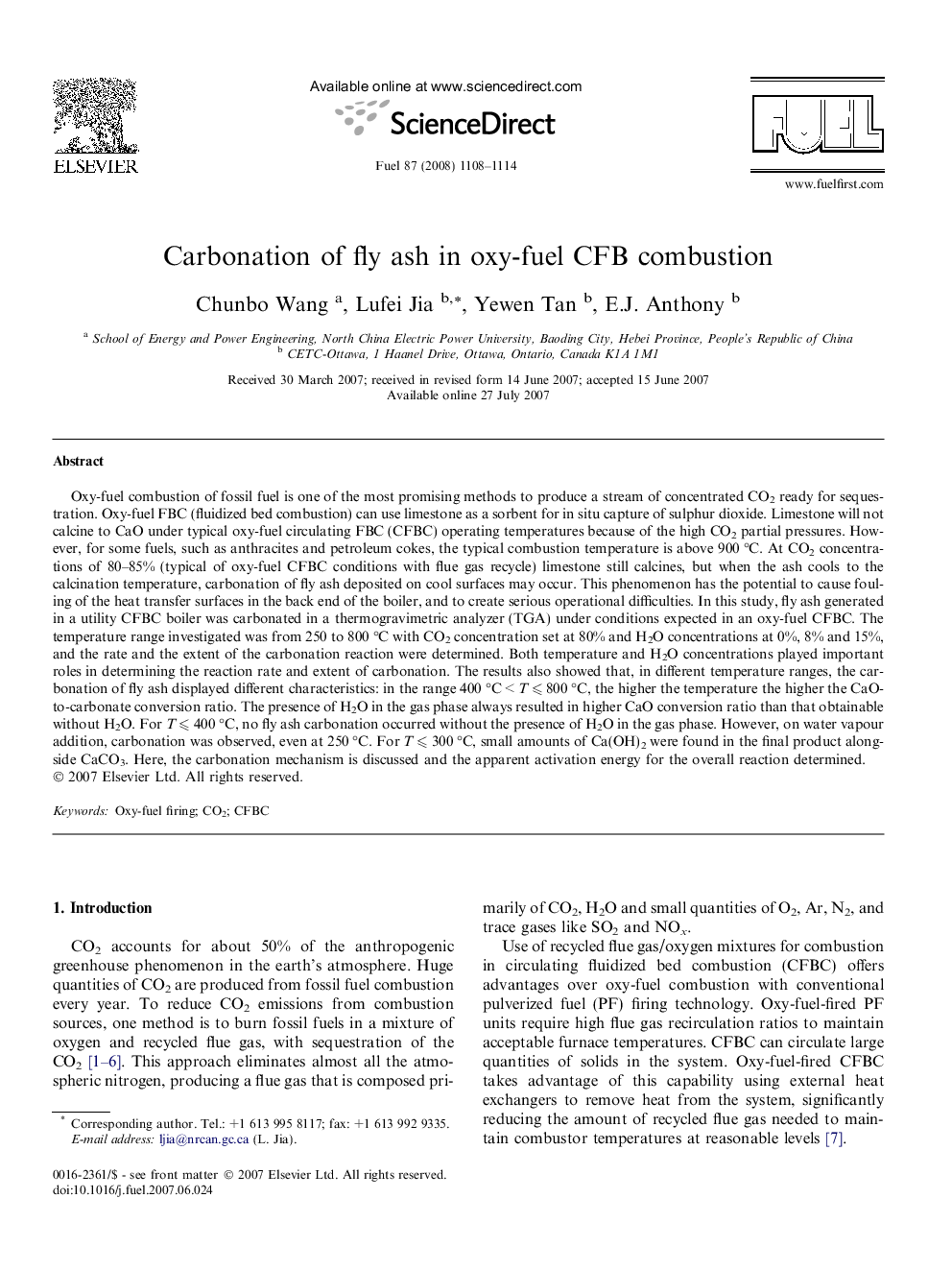| کد مقاله | کد نشریه | سال انتشار | مقاله انگلیسی | نسخه تمام متن |
|---|---|---|---|---|
| 208012 | 461235 | 2008 | 7 صفحه PDF | دانلود رایگان |

Oxy-fuel combustion of fossil fuel is one of the most promising methods to produce a stream of concentrated CO2 ready for sequestration. Oxy-fuel FBC (fluidized bed combustion) can use limestone as a sorbent for in situ capture of sulphur dioxide. Limestone will not calcine to CaO under typical oxy-fuel circulating FBC (CFBC) operating temperatures because of the high CO2 partial pressures. However, for some fuels, such as anthracites and petroleum cokes, the typical combustion temperature is above 900 °C. At CO2 concentrations of 80–85% (typical of oxy-fuel CFBC conditions with flue gas recycle) limestone still calcines, but when the ash cools to the calcination temperature, carbonation of fly ash deposited on cool surfaces may occur. This phenomenon has the potential to cause fouling of the heat transfer surfaces in the back end of the boiler, and to create serious operational difficulties. In this study, fly ash generated in a utility CFBC boiler was carbonated in a thermogravimetric analyzer (TGA) under conditions expected in an oxy-fuel CFBC. The temperature range investigated was from 250 to 800 °C with CO2 concentration set at 80% and H2O concentrations at 0%, 8% and 15%, and the rate and the extent of the carbonation reaction were determined. Both temperature and H2O concentrations played important roles in determining the reaction rate and extent of carbonation. The results also showed that, in different temperature ranges, the carbonation of fly ash displayed different characteristics: in the range 400 °C < T ⩽ 800 °C, the higher the temperature the higher the CaO-to-carbonate conversion ratio. The presence of H2O in the gas phase always resulted in higher CaO conversion ratio than that obtainable without H2O. For T ⩽ 400 °C, no fly ash carbonation occurred without the presence of H2O in the gas phase. However, on water vapour addition, carbonation was observed, even at 250 °C. For T ⩽ 300 °C, small amounts of Ca(OH)2 were found in the final product alongside CaCO3. Here, the carbonation mechanism is discussed and the apparent activation energy for the overall reaction determined.
Journal: Fuel - Volume 87, Issue 7, June 2008, Pages 1108–1114